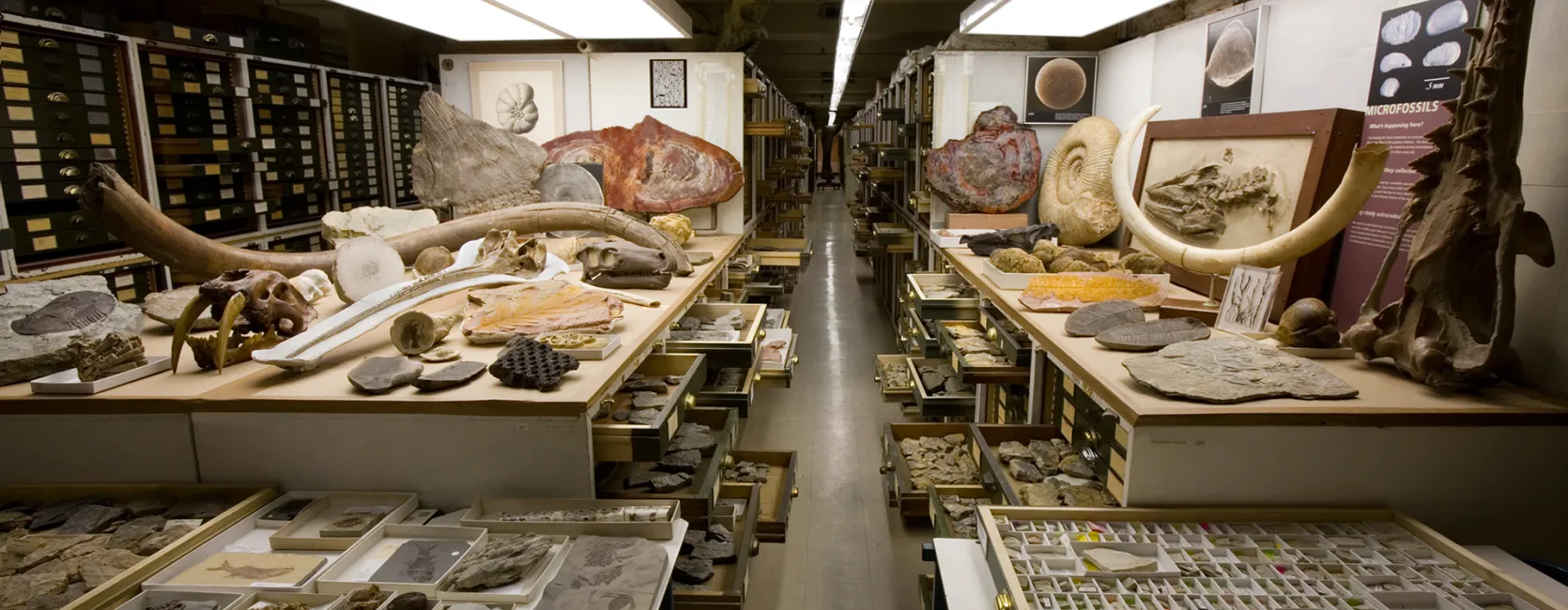Image


The National Fossil Collection contains over 40 million fossil specimens. The collection is about 64% fossil invertebrates and microfossils, 18% fossil vertebrates, and 18% fossil plants by volume. These fossils and rock samples record the history of life on Earth over the last 3.5 billion years. The collection contains specimens collected by the first North American paleontologists and is the reference collection for most of the paleontological research conducted by the United States Geological Survey since the late 1800s. The collection database contains occurrence data for over 799,700 specimen records, over 134,000 of which are primary and secondary types. Based on current estimates, the collection would be digitally represented by 14 million occurrence records if fully databased. Whereas the collection’s origins are rooted in 19th-century paleontological research, the collection continues to grow in scope and accessibility and continues to be a primary resource for researchers worldwide.
Other notable collections include the the Dinosaur Collection, the Glass Mountain invertebrate fauna from the Permian Reef complex in Texas, the Clarno Nut Beds of Oregon, the LaCoe collection of Carboniferous flora, Remington Kellogg's Fossil Marine Mammals, and the type and illustrated collections.